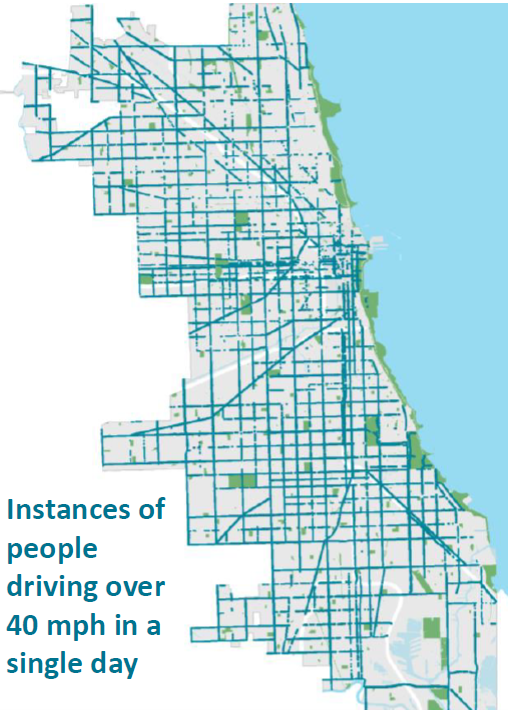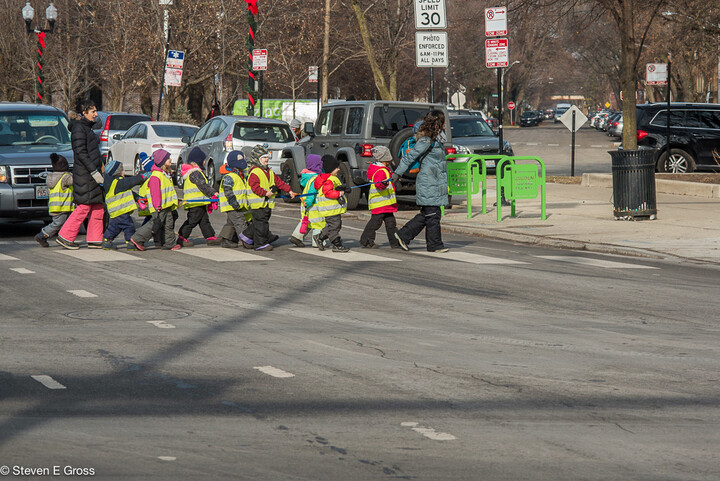The fight for safer streets took a step forward recently when the proposed ordinance to reduce Chicago’s default speed limit successfully advanced through the Chicago City Council’s Committee on Pedestrian and Traffic Safety.
This significant milestone means that the proposal will now go to a full city council vote.
As this legislation proceeds to city council, we want to emphasize that lowering the speed limit is a critical part of a broader strategy to decrease traffic fatalities and build safer neighborhoods throughout Chicago.
This initiative is not about increasing ticket revenue; it’s about promoting equity and safety across the city by tackling the widespread danger of speeding.
To help everyone understand the life-saving benefits of this change, we’ve put together a list of frequently asked questions.
WHY IS CHICAGO CONSIDERING AN ORDINANCE TO LOWER THE SPEED LIMIT?
Nearly 70% of fatal traffic crashes in Chicago involve speeding. Slowing down drivers traveling at dangerous speeds is how we will save lives.
It takes a comprehensive approach to make our streets safer, and lowering the speed limit is an important component of that comprehensive approach.
WILL LOWERING THE SPEED LIMIT MAKE OUR STREETS SAFER?
Yes. Extensive examples from cities across the country has shown that lowering the speed limit has direct and indirect impacts on traffic safety, without an increase in enforcement.
In Boston, the Insurance Institute for Highway Safety found that lowering the speed limit reduced the most dangerous speeding, cars traveling over 35 mph, by 29% without additional enforcement.
Lowering the speed limit also enables Chicago Department of Transportation to design safer streets that encourage drivers to make better choices.
Narrower travel lanes, shorter crossing distances for pedestrians, and tighter turning movements all create a safer environment for people driving, walking, or biking.

IS THIS JUST A MONEY GRAB BY THE CITY? WILL THIS LEAD TO AN INCREASE IN TICKETING?
No. City Council is seeking to establish an interagency working group to address inequitable traffic fines and fees. This group will complete its work before the lower speed limit takes effect.
Chicago is leading the country by directly addressing equity impacts of lowering the speed limit.
WHY DO WE HAVE TO LOWER THE SPEED LIMIT CITYWIDE? WHY NOT FOCUS ON PROBLEM AREAS?
Speeding is a citywide problem that will take a citywide solution. CDOT analysis has shown the level of unsafe speeding in Chicago (see image above) with nearly every community seeing cars driving over 40 mph every day.
These are deadly speeds. Lowering the speed limit is one of the steps we can take to address this dangerous behavior.
What’s more, consistent rules of the road for drivers are a key part of creating a safe transportation system. A patchwork approach would lead to avoidable confusion and conflict.
Graphic: Chicago Department of Transportation

